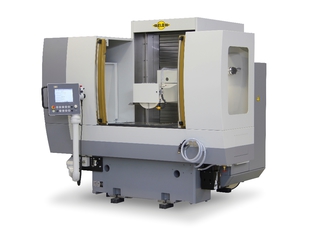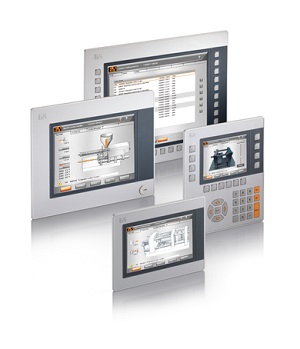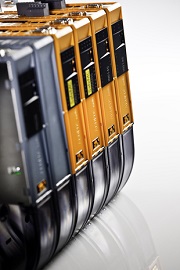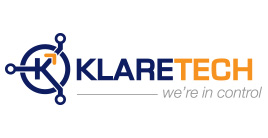A grinder designed with the future in mind
The trend is clear: A growing number of customers in the industrial and trade sectors are looking to equip their production halls and shops with custom-tailored solutions. Boundaries that once separated the worlds of series-produced and special-purpose machinery are fading. In response, machine manufacturers are finding ways to respond more quickly and efficiently to customer requests and market trends. Germany's special-purpose machinery industry has already demonstrated how this can be done: through modularization. The tendency, however, has been to divide a machine into a set of mechanically interchangeable modules and leave it at that. So while the mechanical engineers are free to focus on new features and added value, large portions of the electrical and software solutions are sent back to the drawing board every time a new machine is designed. In light of the rapidly growing role of electronics and the corresponding multitude of machine variants, this is an untenable approach for machine manufacturers over the long term. Recognizing this, ELB-Schliff struck a new course with its flagship Smartline grinder – taking the series to a new level of modularization with fully integrated automation from B&R.

Mechanical and electrical modularization
"We modularized the mechanical side of the Smartline some time ago, allowing us to put together any model – from our standard machine for simple flat grinding tasks to complex high-tech machines – all from the same set of building blocks," explains Dr. Hulusi Bozkurt, senior manager of ELB-Schliff's engineering department. "Based on the requirements at hand, we can select the grinding length, width and height as well as the type and power output of the main drive – from a simple hydraulic table drive to a high-precision, high-speed hydrostatic spindle drive – and combine them with minimal adaptation." Until recently, the circuit diagram had to be redesigned for each new machine, giving each variant a unique control cabinet layout. "Since we had successfully modularized the Smartline's mechanical design during the last major overhaul to the series, one of our top priorities this time around was to make the electrical design equally flexible and efficient. The fact that we also had a host of new safety functions that we wanted to implement didn't simplify the matter," explains Holger Stephan, manager of electrical engineering at ELB-Schliff. "Using the latest B&R technology, we were able to define a whole range of standard machines, each requiring only minimal adaptation of the electrical design. New orders can now go directly into production almost immediately."
Holger Stephan, Manager of Electrical Engineering at ELB-Schliff"Using the latest B&R technology, we were able to define a whole range of standard machines, each requiring only minimal adaptation of the electrical design. New orders can now go directly into production almost immediately." |


Nicolai Wolf, Project Manager and Software Developer at ELB-Schliff"POWERLINK and openSAFETY provide fast and easy commissioning of the entire machine, regardless of its topology. All safety components are configured fully automatically by the SafeLOGIC controller. This reduces valuable commissioning time to a minimum and prevents configuration errors." |
Custom solutions from a single source
Before taking this step, ELB-Schliff took time to thoroughly evaluate a number of renowned automation suppliers. Among the many criteria evaluated were the range of features, the availability of technology functions, expandability, cost, length of warranty and approach to software development. The supplier's quality of service and prospects for the future were also taken into consideration. In the end, B&R emerged as the clear victor.
"One of B&R's winning strengths was its customized solution that offers us a great deal of flexibility and modularity," reports Stephan. "Their X20 system allows us to install the exact modules needed for a particular configuration. The added advantage is that we can leave the order of modules and their wiring unchanged across all variants, which allows us to use the same basic circuit diagram for many different machine configurations." B&R's motion control solution proved to be equally uncomplicated. For the three electrical axes, ELB-Schliff uses state-of-the-art ACOPOSmulti servo drives with integrated safety functionality. Depending on the power requirements for the main spindle motor, either an ACOPOSinverter P74 or an additional ACOPOSmulti drive can be added. "In cases where we need more than 15 kilowatts of power, we leave out the inverter on the one side of the mounting plate and instead mount an additional servo drive on the other side. The rest remains the same, which further reduces the amount of redesigning required," says Stephan.
Modular solution for maximum safety
"B&R's safety technology has allowed ELB-Schliff to revamp its safety systems with a state-of-the-art solution," says Bozkurt. "With integrated SafeMC safe motion control functions, the SafeLOGIC controller and safety-oriented X20 modules, we have the full spectrum of PLCopen safety functions at our fingertips – including Safely Limited Speed and Safe Stop 2." This helped ELB-Schliff make its machines even safer to operate, as confirmed by Bozkurt: "Setting up our machines for a new workpiece is now much more flexible and can be monitored seamlessly. For the user, faster setup means increased productivity." In spite of more comprehensive safety features, ELB-Schliff finds building its machines easier than ever. "We spend even less time on wiring now compared to our old solution," says Stephan. "And – just like the standard X20 modules – we can selectively install only the SafeIO modules required for a particular configuration without affecting the basic cabinet layout." There is no extra effort during commissioning, either. "Thanks to the higher transfer speeds of the Ethernet-based high-performance POWERLINK bus, on which B&R's safety solution is based, commissioning is just as fast as it was before," explains Nicolai Wolf, project manager of new control software development at ELB-Schliff's.
One software project for all machine variants
Wolf took advantage of programming support from B&R's experts. The new software, including the safety application, was available in a matter of a few days.  "This once again highlights the quality of support B&R provides," says the satisfied software specialist. "It was certainly a huge help that we were able to take large portions of the software from the previous controller – a System 2005 controller from B&R – with only a few adaptations. Even more important for us, however, was that the Automation Studio environment allowed us to develop fully modular software." ELB-Schliff now manages every variation of its machine in a single software project. "We used to have to go through and implement every change to the HMI or control software separately for each machine configuration. Now we just work within one central project. I've been really impressed by how easy it is to switch between configurations – not just in theory but in practice," says Wolf.
"This once again highlights the quality of support B&R provides," says the satisfied software specialist. "It was certainly a huge help that we were able to take large portions of the software from the previous controller – a System 2005 controller from B&R – with only a few adaptations. Even more important for us, however, was that the Automation Studio environment allowed us to develop fully modular software." ELB-Schliff now manages every variation of its machine in a single software project. "We used to have to go through and implement every change to the HMI or control software separately for each machine configuration. Now we just work within one central project. I've been really impressed by how easy it is to switch between configurations – not just in theory but in practice," says Wolf.
As the hardware platform for the HMI and control applications, ELB-Schliff selected a B&R Power Panel 500. "B&R offers touch panels built to our design specifications. We used a 10.4" touch screen and a custom arrangement of keys to create a panel that gives operators in the field convenient and intuitive access to the our full range of sophisticated grinding technology," says Bozkurt. The fact that new operators spend considerably less time in training since the changeover confirms his assessment.
Integrating CNC with no change to hardware
ELB-Schliff isn't about to stop there, however. "We're working on integrating additional CNC functions into the controller," says Bozkurt. "With B&R's Generic Motion Control solution, we're extremely well-prepared to do so. What's great is that we can use the existing control hardware, and we don't have to make any changes to the motors or mechanical components. This allows us to deliver machines set up to be easily upgraded with CNC functionality later on. As users' requirements grow, they're all set to grow right along with them at minimal cost. For many of our customers, this flexibility – and the investment protection it brings – are decisive arguments in favor of our machines."


